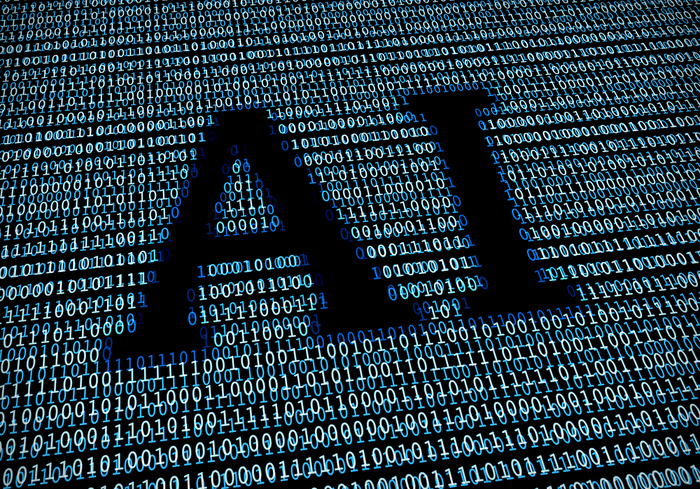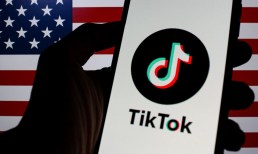An increasingly non-controversial point is that artificial intelligence (AI) and machine learning (ML) have been — and will continue to be — major boons to human advancement. Self-driving cars, voice assistants, digital personal stylists, logistics, digital security — there is an application for AI and “smart computers” around almost every corner these days.
There is also nothing wrong, per say, in associating the terms “AI” or “machine learning” with all those breakthroughs — according to Kirk Bresniker, chief architect of Hewlett Packard Labs for HPE — because the advances people can see are pretty remarkable. Two decades ago, he noted, the Defense Advanced Research Projects Agency‘s (DARPA’s) attempt to build self-driving cars ended with tank-like constructions that mowed down the one and only tree in an open field.
“I’ve been trying to introduce my mother to various kinds of technology for two decades with almost no effect. But now, she can shout out ‘hey, Alexa.’ And with that piece added, she is using technology she hadn’t in 20 years,” Bresniker told Webster during this week’s Monday Conversation.
The trouble, Bresniker noted, is that in looking too closely at its effects (what AI can do), people can sometimes fail to see the bigger picture of its impact. It is a very big picture, as the terms AI and ML refer to a pretty wide swath of technologies and applications.
It’s All Math, All The Way Down
When talking about AI and how it is developed, Bresniker told Webster, he and his colleagues tend to use language that is meant to make the process more understandable for laymen, though it can be a little misleading. Words like “training,” “learning” and “seeing” are all things associated with both humans and AI, but they mean very different things. Computers, he said, don’t see, think or understand the way people do. They use data streams and make use of statistical inferences to offer predictions based on data they have seen before.
Advertisement: Scroll to Continue
Machines look for statistical correlations. When the computer is presented with an image of a cat, he explained, the computer isn’t “seeing” whiskers, a button nose and a tail, which it then deduces into a cat. Numbered patterns in the pixels are what the computer is programmed to spot, and it makes “decisions” about what those patterns represent, based on complex statistical analysis using every other data set it’s ever encountered as its comparison points.
It’s all mathematics, and very high-level probability and statistics — math used in a different way than it ever has been. Mathematics, Bresniker noted, is a conservative field by nature. For instance, calculus was around for about 100 years before it was vigorously defended and went mainstream. This is similarly new mathematical ground, which means it needs to be thoughtfully explored — and math, at base, makes a lot people nervous.
“At conferences, when I tell people that AI is all math, half the room turns pale,” he said, jokingly. They didn’t like math when they were in school, and knowing this is all math doesn’t always help people feel comfortable with AI, as a result.
Knowing that is half the battle, Bresniker said, as understanding AI is developed while laying open the places where difficulties can arise.
The Outputs Are Only As Good As The Inputs
In the olden days (20 years ago), Bresniker said, one knew if something had gone wrong in a computational process because the computer would say so, generally in the form of an error message. However, in the world of AI and probabilistic analysis, something can go “wrong” in terms of output, even if every computational process goes correctly. The programmer and engineers may have done their jobs in the sense that the hardware and software perform in exactly the way they were programmed, but a conclusion still somehow comes out that doesn’t yield the correct answer.
“We already have a bias for thinking ‘the computer told me to do it, so I did.’ But the computer is only as smart as what it was fed upfront. We always need to be able to talk about the data that was actually coming in,” he said.
That’s because things can go wrong at the data level — and often do. The source of data might not be good, for example, or the computer doesn’t have a large enough set of data to draw on. This is why transparency in how data is gathered, and what exactly is going into the machine, is so critical, he noted. First, better data input means a better output later. Second, transparency breeds trust, because no one likes the idea of decisions being made within black boxes by algorithms with wholly invisible criteria and data streams.
Bresniker said one thing he is working on at HPE is adding attestation to the data collection process. Understanding where the data is coming from will help determine whether it is relevant and, if so, how the computer should apply it.
Developers, he noted, don’t want to build blind spots into their offerings, which means they want to be able to vet the data going in, as opposed to letting it collect unfiltered in data lakes.
The Power To Hold Onto The Data
The unique capability of both AI and ML — their real, amplifying effect as tools, Bresniker said — is the amount of data they can hold at once, then process incredibly quickly.
For example, if one looks at a long-time nurse working with a terminal patient, he noted, they will often be able to identify at which point the palliative care is needed, even if they can’t fully explain how they know that to be true. That is because, if even only subconsciously, they are able to spot a large number of seemingly unrelated correlations that tell them what course of action to take.
The moving-forward future of AI is to give it what Bresniker called “naive learning techniques,” where the AI is wandering unsupervised over the large data set, looking for correlations.
“We liken it to when one is looking at a data set, and there is something that keeps bugging them — some random correlation that is surprising. This is a way of systematizing getting to those types of breakthroughs, by allowing the unrestricted AI to look for the ‘huh, did you ever notice that?’ correlations that can put those looking [onto] the larger path to finding causations,” Bresniker said.
The goal, he noted, is to hopefully let AI help human researchers, business leaders, operations managers and a host of others to look at their own data sets and see the things they know, but perhaps don’t know that they know. He added that a piece of the AI future he most looks forward to is when using AI learning tools will allow people to see how long they knew things without knowing they did, because the data they needed was “hiding in plain sight.”
Making Every Byte Count
Today, the access an AI has to building insights is limited by an engineer or programmer’s presupposition about what piece of information was important to gather and place into a data center. That, Bresniker noted, is not the future.
“Data is not centered. Data is pervasive; it permeates our entire world. If you can turn it into understanding, then we can start doing really interesting things as we take [economic] advantage of every byte everywhere,” he said.
That is an extremely technological and formidable problem. In some ways, Bresniker and other researchers are “challenging the physics” when it comes to storage, transmission and nearly instant, simultaneous processing of gigabytes and terabytes of data available.
The challenges there are steep, he noted, but worthwhile. As he asks clients every day, not rushing to meet them means a business is throwing away its data — or worse, giving its data away. That is unwise, particularly in a future where he believes data is on the path to be one of the most valuable things a company can have. As firms begin to understand that and try to meet and overcome those technological issues, the questions that can be asked — and the answers that can be gleaned — may be more interesting and impactful.
“When you do those new things, what does that open up? What new information can be admitted?” he asked. “If you have that instantaneous understanding (that omniscience), [and] these naive algorithms combing over all the accumulated history (all the data coming in), how many conclusions are out there in all of the past accumulate set[s] of data? How many keys to health and human understanding, and human wisdom, are out there (and the experiment has been already done), but we’ve never put the right facts together at the same time in the right sequence?”




